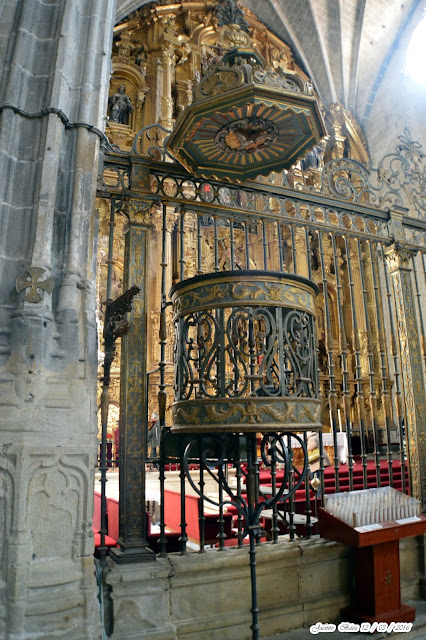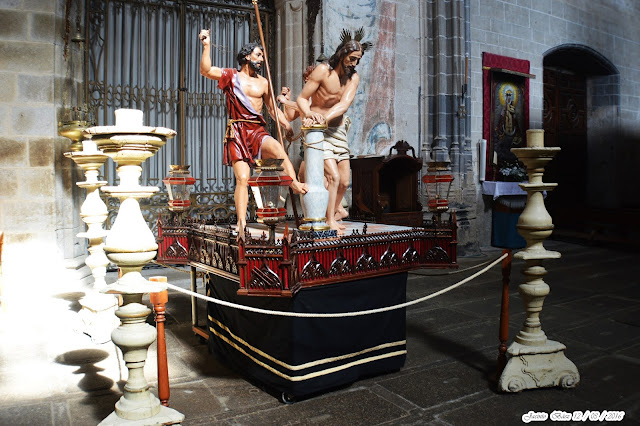 |
La catedral de Coria se ubica en
Coria, Extremadura, en España. Su construcción actual, ubicada donde se hallaban la antigua catedral visigoda, la mezquita mayor de la ciudad y la anterior iglesia-catedral románica, se inició en el año 1498, finalizando ésta 250 años más tarde, en torno a 1748. El terremoto de Lisboa ocurrido el 1 de noviembre de 1755 la dañó seriamente. La catedral es de estilo gótico de transición, con importantes añadidos platerescos (según trazas de Pedro de Ybarra) y barrocos (Torre-campanario diseñada por Manuel de Lara Churriguera). En su interior guarda una magnífica colección de pintura, escultura y orfebrería. Destaca el retablo mayor del siglo XVIII con tallas de Alejandro Carnicero, así como los sepulcros episcopales de Jiménez de Préxamo por Diego Copín de Holanda, y García de Galarza por Lucas Mitata. Se deben citar también el coro, con una sillería mudéjar de nogal de los siglos XV y XVI, cerrado por una verja protorrenacentista del siglo XVI. Destacan también la reja de la capilla mayor (siglos XVI y XVIII) y los retablos de las Reliquias (siglo XVIII) y San Pedro de Alcántara (siglo XVII). |
Una recopilación de mis recorridos por Extremadura, sierra de Aracena, Picos de Aroche y raya de Portugal.
Archivo del blog
miércoles, 16 de marzo de 2016
CORIA.- CATEDRAL . / CATHEDRAL CITY CORIA /
Ubicación:
10800 Coria, Cáceres, España
Suscribirse a:
Enviar comentarios (Atom)













































No hay comentarios:
Publicar un comentario